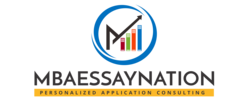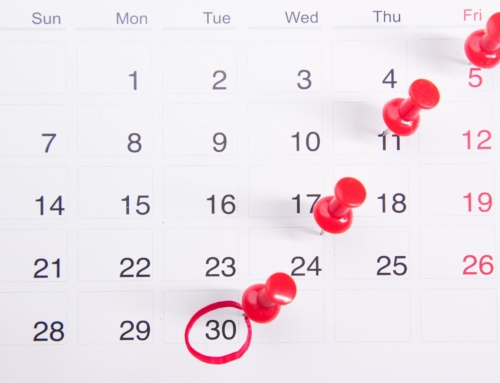You’re in the middle of your business school interview, confidently responding to all the questions your interview panel is shooting at you from all directions.
“I’m crushing it!” you think to yourself. On the outside, you’re smiling politely. On the inside, you’re glowing.
One of the interviewers decides it’s time to ask another question. A dreadful question. This a question that makes most people squirm during any interview.
“What’s your greatest weakness?”
You pause. Furiously thinking. Still smiling politely. You can feel your pause stretching eternally.
And then you blurt out something. Incoherent. Banal. Inauthentic.
Your interview panel looks visibly unconvinced. The interviewers start to probe further. Your responses start to become more and more convoluted. Now you feel yourself struggling to explain.
And just like that you know you have messed up what was until then a great interview.
Over the years, I’ve interviewed, both at MBAEssayNation and on the interview panel of ISB, hundreds of applicants. And most struggle to respond well to this question.
What I have done is analyzed the best and the worst responses to this much-dreaded question.
So, by the end of this post, you will walk away with the exact formula to answer this question like a pro.
But first, we need to understand the “Why” behind this question.
Why is this question important?
3 most important things your interviewers want to know when they ask this question are –
- How self-aware are you?
We all face numerous challenges at our workplace, ranging from conflicts to managing deliverables. And just like we have strengths that help us navigate many of these challenges, there are also weaknesses that prevent us from operating at optimal levels. The interviewers, by asking this question, essentially want to know whether you are aware of any such weaknesses.
- Can you be open and honest about it?
And if you are aware of your weakness, how willing are you to articulate it openly and with honesty?
- Finally, what are you doing to overcome your weakness?
It’s all very well to be aware of your weakness and the fact that you can even be open about it. But what the panel would really like to know is whether you are pursuing any self-improvement opportunities. Because a weakness that’s hindering your effectiveness has to be tackled, right?
Having said that, it’s never easy to confess openly about your weakness.
In fact, 90% of candidates during their B-School interviews, struggle to respond to this question.
So, how should you respond to this question?
You need to show these 2 crucial elements in your response –
- Self-Awareness
- Actions and improvements
Show Self-Awareness
Start by identifying your areas of improvement. 3 sources you can tap into are
Source No #1: Reflect and Introspect
Your past is a great source for identifying your weaknesses. Incidents where you know you could’ve handled things better, but you didn’t or couldn’t. Write them down.
Source No #2: Post MBA goals – from your essays
Chances are you’ve already identified an important area of weakness while writing your post-MBA goals essay.
Source No #3: Feedback from managers, colleagues, or your recommenders
Seek out those at work who know you best. Get their honest feedback on what you can improve further.
(I’d highly recommend you connect with people from your professional network– those who’ve worked with you –rather than trying to get it from family and friends. Because, well, our family and friends think we’re awesome and that’s not going to be of much help, is it?)
Show Actions and Improvements
It’s all about momentum. You can’t just stop saying, “Oh, well, this is my weakness”.
Your interviewers would be interested to know what’re you doing about it.
This means when you respond, it should be all about Show rather than Tell.
Show that you’re working on improving your weakness by outlining the actions you’re taking and the results you’re achieving.
To recap, make sure you’re able to verbalize your self-awareness about a weakness, explain what you’re doing to overcome your weakness, and summarize the progress you’ve made so far.
Weaknesses and Skills
Because your weaknesses are typically linked to skills or capabilities you need at work, it helps to know about the different skill types.
Broadly, there’re 2 categories –
- Hard Skills
- Soft Skills
Hard skills are those foundational blocks you need to do your work competently. Examples of hard skills would be accounting, advanced mathematics, project management, specific software applications and so on, depending on your professional background.
Soft skills are integral to you as a person. For instance, if you communicate well through writing, you have strong written communication skills. Or, if you are someone who has lots of patience and you don’t get easily rattled, then your patience is your soft skill. Some other examples of soft skills are creativity, being organized, and, risk-taking, to list a few.
Soft skills can be further broken down into two subcategories –
- Interpersonal Skills
- Work Ethic Skills
Interpersonal skills help you work with others, be it your team members, managers, vendors, or clients. Examples of weak interpersonal skills include being too blunt with others, not having enough patience, being aggressive, extremely shy, and so on.
Work ethic skills relate to how you are at work. Examples of work ethic skills include taking on too many projects at once, multitasking, delegating tasks, being obsessed with small details, and so on.
Pitfalls to look out for
There are 4 common fallacies that most people fall into when they think about this question.
- Trying too hard to turn a negative into a positive
Saying things like “I am a perfectionist” or “I work too hard” seem banal and inauthentic. Even if you think these are true, stay away from such oft-repeated responses. You’ll get a massive eye-roll from your interviewers.
- Refusing to answer the question
We are all inherently flawed. And we’re all works in progress. That’s just what makes us human. Refusing to acknowledge that there’re areas we can do better is a strong indicator of a lack of self-awareness.
- Revealing a weakness that raises red flags
If you’re a project manager but you say, “My project management skills are my biggest weakness”, that’s a RED flag. Similarly, if you are a people manager, but you say, “I hate managing people, I’d rather be an individual contributor”, that’s again a red flag.
More so, in the context of a business school interview because business schools are in the business of nurturing business leaders who can lead others. (Wow, that’s a lot of “business” there!)
- Revealing weaknesses that you’ve already overcome
Remember your interviewers want to know, “What IS your greatest weakness?” which means they want you to talk about a weakness you haven’t yet overcome but are in the process of overcoming.
Customize for the context
In a business school context, know what business schools look for in their future MBA students. Typically, there’re 5 primary attributes all business schools value the most –
- Leadership
- Team player
- Emotional intelligence
- Analytical thinking
- Respect for diverse perspectives
Make sure the weakness you zoom in on isn’t in major conflict with any of the above attributes.
Examples of Answers That Might Backfire In B-School Interviews
What makes answering this question so tough is that it’s tricky. Sometimes a response that’s authentic may still backfire because your interviewers may perceive it to be in conflict with the key attributes that business schools look for.
“I am incredibly introverted, which makes me wary of sharing my ideas in a group setting or speaking up during team meetings. I feel that I had good intentions, I just wasn’t always comfortable speaking up…”
The reason this response could be a problem is that most business schools follow case study methodology which means at the most basic level, students are expected to openly share their thoughts with their classmates and faculty.
If you’re too shy to speak up in a group setting, you may not be perceived as a good fit because being comfortable with people is an essential attribute for a business leader.
This response could, therefore, be in conflict with the leadership attribute that schools value.
Do you see the challenge with such a response now? Good, let’s see some more examples.
“I go to great lengths to avoid confrontation. This caused me to compromise sometimes on the quality of my work or what I needed to complete a project just to keep the peace. This became a real problem when I became a manager..”
Compromising with the quality of your work thanks to your weakness can result in some serious eyebrow-raising from your interviewers. Your foundational competency is under a shadow which again is in conflict with core attributes such as leadership and emotional intelligence.
“Oftentimes, I can be timid when providing constructive feedback to co-workers or managers, out of fear of hurting someone’s feelings…”
This is also in conflict with attributes such as leadership and emotional intelligence.
“When I’m given a task, I am very goal-oriented and work hard to complete that task. However, when new projects come across my plate, I sometimes jump right into those projects and halt work on the projects I had in progress. Having to jump between tasks, so many times throughout the day hinders my productivity…
This can raise questions about your ability to manage the heavy workload of a rigorous program that an MBA is.
Similarly, a response like “I’m not great at analyzing data or numbers” can be viewed negatively especially if you are applying to a program that has a heavy quant-focused curriculum.
As I mentioned before, be careful about the weakness you want to talk about. Being overly honest without knowing the context could backfire.
Because some of these responses can be double-edged and can go either way – either in your favor or against it – you’ve got to factor in these 4 things –
- Be authentic – The BS detectors of interviewers are finely honed so this one’s a no-brainer
- While you’re being authentic, remember to pick a weakness that is acceptable in a business school context – use the 5 key attributes to guide your choice
- Next, select a weakness that’s relatively minor and can be fixed with the right effort
- And make sure you identify 2-3 weaknesses, just in case, your interviewers ask for more.
All right, now that we’ve understood the “Why” of this question, it’s time to focus on how you can create your response.
Create your response in 3 steps
Use this simple 3I framework
Identify – Identify your weakness
Initiate – Initiate actions to work on your weakness
Improve – Improve your weakness
Identify a “good” weakness
Ask yourself these questions –
- Is there a task or work-related skill that you don’t like to do or don’t do well?
- Did your supervisor or co-workers ever point out you needed to work on some characteristics?
- Did you ever have any academic weaknesses?
Example of identifying a weakness
Weakness Identified – Being overly self-critical
“My greatest weakness is that I sometimes have a hard time letting go of a project. I’m the biggest critic of my work, and I can always find something that needs to be improved or changed.
I observed that even after completing a deliverable, I would mull over what I could have done better. I decided that beyond a certain point, it was unproductive to focus so much attention on what could have been improved or changed.”
Show actions you’ve initiated to work on your weakness
- Enroll in a class
- Get training (internal or external)
- Join groups or workshops
- Sign up for an opportunity at work
- Volunteer for an activity outside of work that uses that skill
- Get help from a mentor or advisor
- Find tools that help correct the weakness
Example of initiating action
To help myself improve in this area, I have started to give myself deadlines for revisions.
Within those deadlines, I proactively also seek feedback from my manager and team, and if their feedback confirms that my deliverables meet expectations, I tell myself that my work is good enough to be submitted and that it’s time for me to move on to other deliverables or projects.
Show you are able to make improvements
Ask yourself these questions
- Have you noticed an improvement?
- Did your manager or co-workers notice a change after you put the effort to work on your weakness?
- Can you prove that you’re fixing your weakness with clear results?
Example of improving
“This helps ensure that I’m neither making changes at the last minute nor expending precious time and energy trying to perfect something that’s already good enough.
I’ve also started to take out time to look at my achievements objectively and celebrate those wins.”
Tie all the 3Is together with the STAR method
STAR, if you haven’t come across this method before, stands for Situation, Task, Action, Result.
The beauty of STAR is that it lends a structure to your response, helping you craft your response in a way that makes it easy for the listener to appreciate your story far more effectively.
Now, that we have all the 3 elements from the 3I framework, let’s see how, using STAR, we can combine the elements to form a coherent and importantly, impactful response.
Situation – My greatest weakness is that I sometimes have a hard time letting go of a project. I’m the biggest critic of my work, and I can always find something that needs to be improved or changed.
Task – I observed that even after completing a deliverable, I would mull over what I could have done better. I decided that beyond a certain point, it was unproductive to focus so much attention on what could have been improved or changed.
Action – To help myself improve in this area, I have started to give myself deadlines for revisions. Within those deadlines, I proactively also seek feedback from my manager and team, and if their feedback confirms that my deliverables meet expectations, I tell myself that my work is good enough to be submitted and that it’s time for me to move on to other deliverables or projects.
Result – This helps ensure that I’m neither making changes at the last minute nor expending precious time and energy trying to perfect something that’s already good enough. I’ve also started to take out time to look at my achievements objectively and celebrate those wins.
Some more examples
Weakness Identified – Delegation
Situation – I think one area I could work on is my delegation skills. I am always so concerned about everything being done right and on time that I can get stuck in that mentality of “If you want it done right, do it yourself.” Unfortunately, that’s not always possible and I’ve realized that by not delegating I can in fact slow things down.
Task – I learned this recently when I was working with 2 others on a critical cross-functional project. The project had a tight deadline and initially, I sensed my team members were not contributing as much as they should.
So, I took up most of the activities because I didn’t want us to fall behind schedule. But I soon realized that by doing so, I was caught up in the minutiae, I was stressing myself out, and worse, we were all missing out on the opportunity to collaborate effectively by bringing our knowledge and expertise to the table, which was the reason why we were chosen for the project in the first place.
Stepping back helped me see that it wasn’t a lack of willingness but a fear of failure that was holding my team members from bringing their best. And by taking up all the activities, I was in fact, doing a huge disfavor to not just myself but also to them.
Action – I created a plan for all three of us to work on various activities and started to have mini-training sessions to coach my team members on how to work on those activities. Taking the time to clarify tasks, putting necessary support and resources in place, and reviewing progress regularly are some of the steps I took to overcome my reluctance to delegate. Soon, our project started to progress really well. My team members learned new skills and gained confidence each time they successfully completed an activity. Importantly, I got the time to focus on the big picture.
Result – This experience has taught me how crucial it is to delegate, and how delegation can empower people by turning them into problem solvers. I know this is important to both my success and the development of my team. I am also learning that for delegation to succeed, it’s important to put the necessary support and resources in place along with regular progress reviews.
Weakness – Too Direct
Situation – My blunt, straightforward nature has allowed me to succeed over the years as a team manager, because I’m able to get things done efficiently, and people often appreciate my honesty. However, I’ve recognized my bluntness doesn’t always serve my team well when I’m delivering feedback.
Task – When my team members’ work would fall short of my expectations, I’d give direct, critical feedback. But I observed that many team members would take the feedback personally rather than as feedback for their specific deliverables or performance at work. I realized I had to become more tactful in the way I shared feedback, especially when their work didn’t meet my expectations.
Action – To combat this, I’ve worked to develop empathy and deeper relationships with those I manage. To do so, I requested my manager to coach me. I also enrolled in an online leadership management course to develop my ability to deliver feedback.
Result – I’ve realized feedback can be both helpful and kind when delivered the right way. I understand how different individuals respond differently to feedback and that’s why it’s important I keep the process as objective as possible by sharing constructive rather than critical feedback so that, at the end of a feedback discussion, people don’t just become aware about their improvement areas but also feel empowered to work on those areas.
Weakness – Impatience
Situation – My greatest weakness is that I get impatient when projects run past the deadline. I’m a stickler for due dates and I get uncomfortable when work is not completed on time.
Task – I was working with my onshore team to release a much-awaited product by a certain date, setting up daily meetings with them. I ensured that the majority of the user testing was done offshore so that all the activities were completed on schedule. However, just 3 days before the launch, the onshore team decided to delay the release by 2 weeks. This caused me a great deal of consternation, given the effort my team and I had put in. When I spoke to my onshore team, I found out that their senior managers had wanted them to change the UX and when the UX team suddenly became available, they decided to delay the release for the new UX. I have always prided myself on being a problem solver and getting things done on or before schedule. Still, I learned through this experience that it’s important for me to accept that sometimes, in spite of my best efforts, projects will be delayed due to factors outside my control.
Action – To handle such situations where things outside my control could affect my plans, I have started to focus on what I control – I’m paying close attention to how I can improve responding to unforeseen situations, by making an effort to accept that there are different ways of achieving an outcome, in this case launching a product that was useful for users, despite the delays. And I am trying to see things from different individuals’ points of view and the constraints they might be working with.
Result – I am learning that when managing projects with many variables, it’s not always possible to plan everything to the last detail. It’s important to focus on planning rather than remaining too fixated on the plans. And that by being patient and motivational in such situations, I would be able to foster greater efficiency.
Weakness – Too detail-oriented
Situation – My greatest weakness is that I sometimes focus too much on the details of a project and spend too much time analyzing the finer points.
Task – A few months ago, I was asked to create a 3-min video presentation to build awareness about a strategic program I was managing. This was the first time I was creating a presentation in a video format. The plan was to show the video to employees across my company.
I worked hard to capture as many details as possible to ensure that I covered every single aspect in great depth so that the context and messaging were clear to all employees.
When I told my manager how I was struggling to fit in all the information in a 3-min video, my manager helped me understand that for a 3-min video, I should include a high-level view of the program, and by including too many details, I run the risk of overwhelming them.
Action – I refocused my attention on highlighting the high-level view of the program. Initially, I struggled but I made a conscious effort to be stringent in choosing only the most crucial elements.
I constantly reminded myself of the deadline to focus on capturing the most important aspects of my program and was able to limit the video’s length to 3 mins. It was a great success and was well-received.
Result – Overall, the experience has shown that I have some unlearning and learning to do to balance out being too detail-oriented.
I’ve been striving to improve in this area by checking in with myself at regular intervals and articulating the bigger purpose of each task. This helps me re-focus on the bigger picture. It’s forcing me to examine what matters and to let go of what doesn’t.
Additionally, I regularly seek the perspectives of my manager and colleagues, to ensure I’m effectively channeling my detail-oriented side.
Weakness – I could use more experience in…
Choose a hard skill such as finance, analytics, PowerPoint, and so on, and then elaborate
Situation – Because my work has always been more on the creative side and involved minimal quantitative data, I didn’t focus much on data analysis.
Task – However, I recognized data analysis is in fact, quite important to understand how my content is performing on various online channels.
Action – I decided to set up monthly meetings with the SEO manager to discuss analytics and how our posts were performing. On her advice, I took up a Google Analytics course to get better at analyzing web data.
Result – Few months back, I received my Google Analytics certificate, and I make it a point to regularly analyze data related to our blog.
I’ve become much more comfortable with analyzing data through these efforts
Examples of identifying weaknesses in your essays and recommendation letters
One good way is to ask yourself
“What is a weakness that I have and how can this school’s MBA program help me address it?”
Here’s an example of a weakness that one of my clients identified from their post-MBA goals essay
“While managing marketing operations, I recognized I lack adequate understanding of a data-driven approach to derive actionable insights and real-time marketing decisions from complex data streams.
I sought my manager’s help for an opportunity to work with the data science team on a short-term cross-functional project. This gave me a good chance to understand the fundamentals of data analytics. I continue to build my knowledge about space by reading about it in my spare time.
ISB’s courses on marketing analytics will help me gain not just quantitative but also managerial critical thinking skills and consumer behavior knowledge to bridge my knowledge gaps in this area.”
The weakness identified was marketing analytics.
Likewise, your recommendation letters are also another good source you can use to identify weaknesses.
If you don’t have access to your recommendation letters, you can always request your recommender(s) to share their constructive feedback directly with you
And if you have access to your recommendation letters, then look for this question that your recommender would’ve responded to –
Describe the most important piece of constructive feedback you have given the applicant.
Here’s an example of a weakness that one of my clients identified from their recommendation letters –
When we were working together for a distributor review meeting, I noticed that Sumit would sometimes take up many activities, affecting his efficiency.
To manage this issue and given that he managed a large territory, I advised him to adopt a systematic approach to pursue various leads and opportunities. I told him to assess, prioritize, analyze, and then act. I advised him to prioritize his important tasks, ask as many clarifying questions as possible to thoroughly understand the problem at hand, and then outline a solution. For the next few days, Sumit followed my approach and prioritized a number of accounts to work on and we made substantial progress with those accounts.
Since then, he has diligently practiced this approach. One time, he was given the responsibility to develop a new distributor. He was already managing one of the largest distributors along with 45-50 client accounts when he got this additional responsibility. He did an excellent job by focusing only on the 15-20 major accounts and devoted the rest of his time to the training and development of the new distributor.
The weakness identified was multitasking.
Here’s one more example where the weakness identified was a lack of cross-functional knowledge –
“Reena needs more exposure to the various internal business functions. Therefore, I suggested to her to explore the business side, by taking up specialized courses or going for an MBA. This way Reena will be able to contribute even more to our organization if she developed a more detailed understanding of the other functions. She has taken my feedback well and has increased her interactions with colleagues from the other functions in an attempt to understand more about the different functions and their challenges.”
To Conclude
There are many ways, including using a SWOT matrix, to zoom in on weaknesses that you use to talk about during your MBA interviews.
By following the tips and analyzing the examples shared in this post, you can see that if you prepare a complete response you are able to pre-empt further follow-up questions.
And why is that important? Because your interviewers can then move on to hopefully, easier questions 😊
Found this interview guide useful?
I’ve created a comprehensive eBook, “Basics to Champion: 29 Tips to Build A Compelling Business School Application”.
It’s a stunning-looking book, packed with valuable insights delivered through lots of easy-to-digest infographics!
Over 3000 people have downloaded it so far, and the feedback has been amazing.
Download your copy of “Basics to Champion: 29 Tips to Build A Compelling Business School Application” here
If you want to know about the most powerful body language tips for your MBA interview, check out our article on
10 Powerful Body Language Tips to Ace Your Business School Interview







